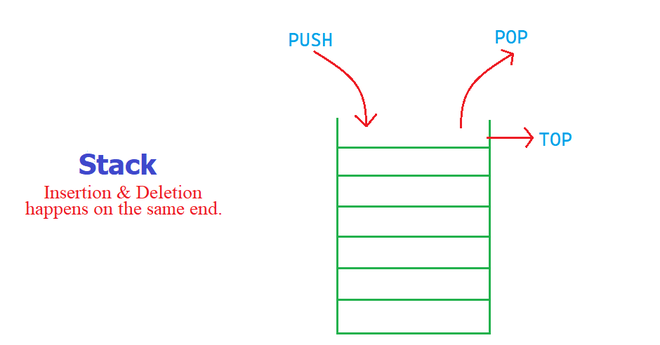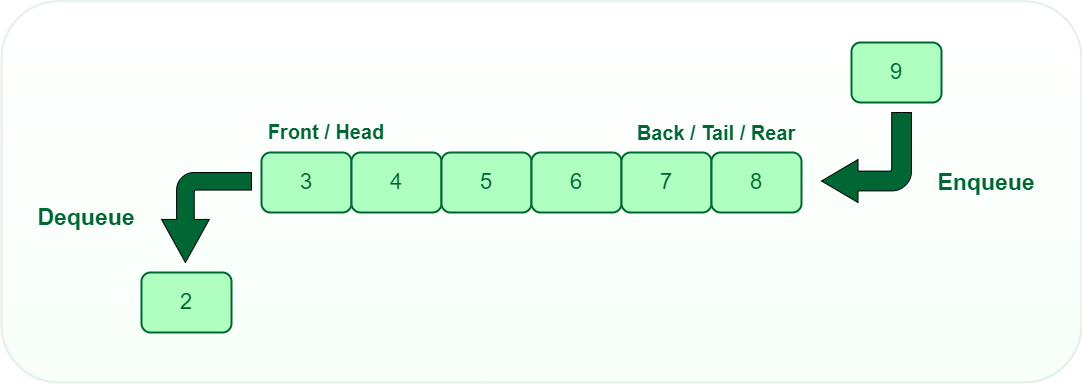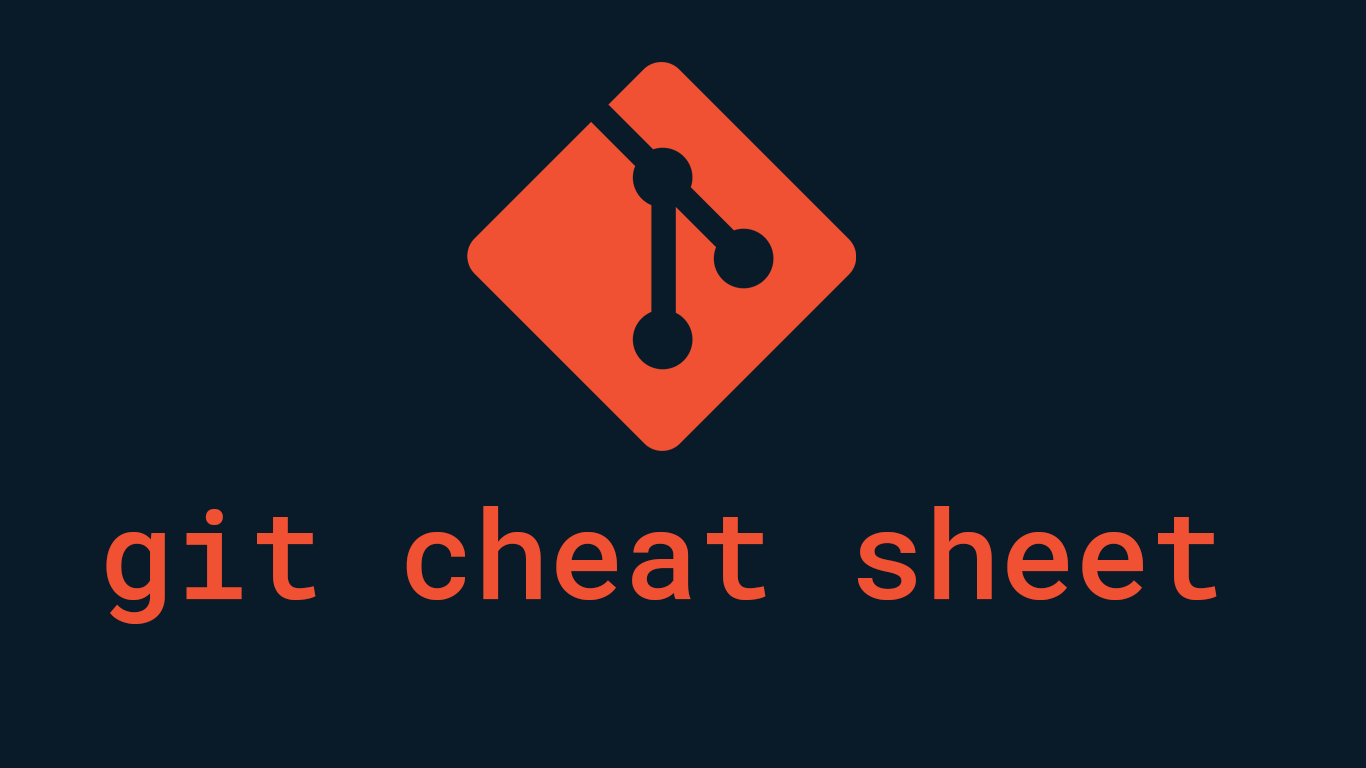Introduction to Data Structures
A data structure is defined as a particular way of storing and organizing data in our devices to use the data efficiently and effectively. The main idea behind using data structures is to minimize the time and space complexities. An efficient data structure takes minimum memory space and requires minimum time to execute the data.
How to start learning Data Structures with Javascript?
The first and foremost thing is dividing the total procedure into little pieces which need to be done sequentially.
The complete process to learn DS from scratch can be broken into 3 parts:
- Learn about Complexities
- Learn the basics of individual Data Structures
- Practice Problems on Data Structures
1. Learn about Complexities
Here comes one of the interesting and important topics. The primary motive to use DSA is to solve a problem effectively and efficiently. How can you decide if a program written by you is efficient or not? This is measured by complexities. Complexity is of two types:
- Time Complexity: Time complexity is used to measure the amount of time required to execute the code.
- Space Complexity: Space complexity means the amount of space required to execute successfully the functionalities of the code. You will also come across the term Auxiliary Space very commonly in DSA, which refers to the extra space used in the program other than the input data structure.
Both of the above complexities are measured with respect to the input parameters. But here arises a problem. The time required for executing a code depends on several factors, such as:
- The number of operations performed in the program,
- The speed of the device, and also
- The speed of data transfer is being executed on an online platform
2. Learn Data Structures with Javascript
Here comes the most crucial and the most awaited stage of the roadmap for learning data structure and algorithm – the stage where you start learning about DSA. The topic of DSA consists of two parts:
- Data Structures
- Algorithms
Though they are two different things, they are highly interrelated, and it is very important to follow the right track to learn them most efficiently. If you are confused about which one to learn first, we recommend you to go through our detailed analysis on the topic: What should I learn first- Data Structures or Algorithms? Here we have followed the flow of learning a data structure and then the most related and important algorithms used by that data structure.
1. Array in javascript
An array is a collection of items of the same variable type stored that are stored at contiguous memory locations. It’s one of the most popular and simple data structures and is often used to implement other data structures. Each item in an array is indexed starting with 0.
Declaration of an Array: There are basically two ways to declare an array.
Syntax:
let arrayName = [value1, value2, ...]; // Method 1
let arrayName = new Array(); // Method 2
Types of Array operations:
- Traversal: Traverse through the elements of an array.
- Insertion: Inserting a new element in an array.
- Deletion: Deleting element from the array.
- Searching: Search for an element in the array.
- Sorting: Maintaining the order of elements in the array.
Below is the implementation of the array in javascript:
// Initializing while declaring
// Creates an array having elements 10, 20, 30, 40, 50
var house = new Array(10, 20, 30, 40, 50);
// Creates an array of 5 undefined elements
var house1 = new Array(5);
// Creates an array with element 1BHK
var home = new Array("1BHK");
console.log(house)
console.log(house1)
console.log(home)Output:
[ 10, 20, 30, 40, 50 ]
[ <5 empty items> ]
[ '1BHK' ]
2. String in javascript
JavaScript strings are used for storing and manipulating text. It can contain zero or more characters within quotes.
Creating Strings: There are two ways to create a string in Javascript:
- By string literal
- By string object

String operations:
- Substrings: A substring is a contiguous sequence of characters within a string
- Concatenation: This operation is used for appending one string to the end of another string.
- Length: It defines the number of characters in the given string.
- Text Processing Operations: Text processing is the process of creating and editing strings.
- Insertion: This operation is used to insert characters in the string at the specified position.
- Deletion: This operation is used to delete characters in the string at the specified position.
- Update: This operation is used to update characters in the string at the specified position.
Below is the implementation of the String in javascript:
// String written inside quotes
var x = "Welcome to GeeksforGeeks!";
console.log(x);
// Declare an object
var y = new String("Great Geek");
console.log(y);
let a = "abcdefgh";
// Finding the first index of the character 'b'
console.log(a.indexOf('b'));
let a2 = "Hello World";
let arrString = ["Geeks", "for", "Geeks"]
// Replacing the word 'World' with 'Geeks'
console.log(a2.replace("World", arrString[0]));
Output:
Welcome to GeeksforGeeks!
[String: 'Great Geek']
1
Hello Geeks
3. Linked List in javascript
A linked list is a linear data structure, Unlike arrays, linked list elements are not stored at a contiguous location. it is basically chains of nodes, each node contains information such as data and a pointer to the next node in the chain. In the linked list there is a head pointer, which points to the first element of the linked list, and if the list is empty then it simply points to null or nothing.

Operations on Linked List:
- Traversal: We can traverse the entire linked list starting from the head node. If there are n nodes then the time complexity for traversal becomes O(n) as we hop through each and every node.
- Insertion: Insert a key to the linked list. An insertion can be done in 3 different ways; insert at the beginning of the list, insert at the end of the list and insert in the middle of the list.
- Deletion: Removes an element x from a given linked list. You cannot delete a node by a single step. A deletion can be done in 3 different ways; delete from the beginning of the list, delete from the end of the list and delete from the middle of the list.
- Search: Find the first element with the key k in the given linked list by a simple linear search and returns a pointer to this element
Below is the implementation of the Linked List in javascript:
class Node {
// constructor
constructor(element) {
this.element = element;
this.next = null
}
}
// linkedlist class
class LinkedList {
constructor() {
this.head = null;
this.size = 0;
}
// adds an element at the end
// of list
add(element) {
// creates a new node
var node = new Node(element);
// to store current node
var current;
// if list is Empty add the
// element and make it head
if (this.head == null)
this.head = node;
else {
current = this.head;
// iterate to the end of the
// list
while (current.next) {
current = current.next;
}
// add node
current.next = node;
}
this.size++;
}
// insert element at the position index
// of the list
insertAt(element, index) {
if (index < 0 || index > this.size)
return console.log("Please enter a valid index.");
else {
// creates a new node
var node = new Node(element);
var curr, prev;
curr = this.head;
// add the element to the
// first index
if (index == 0) {
node.next = this.head;
this.head = node;
} else {
curr = this.head;
var it = 0;
// iterate over the list to find
// the position to insert
while (it < index) {
it++;
prev = curr;
curr = curr.next;
}
// adding an element
node.next = curr;
prev.next = node;
}
this.size++;
}
}
// removes an element from the
// specified location
removeFrom(index) {
if (index < 0 || index >= this.size)
return console.log("Please Enter a valid index");
else {
var curr, prev, it = 0;
curr = this.head;
prev = curr;
// deleting first element
if (index === 0) {
this.head = curr.next;
} else {
// iterate over the list to the
// position to removce an element
while (it < index) {
it++;
prev = curr;
curr = curr.next;
}
// remove the element
prev.next = curr.next;
}
this.size--;
// return the remove element
return curr.element;
}
}
// removes a given element from the
// list
removeElement(element) {
var current = this.head;
var prev = null;
// iterate over the list
while (current != null) {
// comparing element with current
// element if found then remove the
// and return true
if (current.element === element) {
if (prev == null) {
this.head = current.next;
} else {
prev.next = current.next;
}
this.size--;
return current.element;
}
prev = current;
current = current.next;
}
return -1;
}
// finds the index of element
indexOf(element) {
var count = 0;
var current = this.head;
// iterate over the list
while (current != null) {
// compare each element of the list
// with given element
if (current.element === element)
return count;
count++;
current = current.next;
}
// not found
return -1;
}
// checks the list for empty
isEmpty() {
return this.size == 0;
}
// gives the size of the list
size_of_list() {
console.log(this.size);
}
// prints the list items
printList() {
var curr = this.head;
var str = "";
while (curr) {
str += curr.element + " ";
curr = curr.next;
}
console.log(str);
}
}
// creating an object for the
// Linkedlist class
var ll = new LinkedList();
// testing isEmpty on an empty list
// returns true
console.log(ll.isEmpty());
// adding element to the list
ll.add(10);
// prints 10
ll.printList();
// returns 1
console.log(ll.size_of_list());
// adding more elements to the list
ll.add(20);
ll.add(30);
ll.add(40);
ll.add(50);
// returns 10 20 30 40 50
ll.printList();
// prints 50 from the list
console.log("is element removed ?" + ll.removeElement(50));
// prints 10 20 30 40
ll.printList();
// returns 3
console.log("Index of 40 " + ll.indexOf(40));
// insert 60 at second position
// ll contains 10 20 60 30 40
ll.insertAt(60, 2);
ll.printList();
// returns false
console.log("is List Empty ? " + ll.isEmpty());
// remove 3rd element from the list
console.log(ll.removeFrom(3));
// prints 10 20 60 40
ll.printList();
Output:
true
10
1
undefined
10 20 30 40 50
is element removed ?50
10 20 30 40
Index of 40 3
10 20 60 30 40
is List Empty ? false
30
10 20 60 40 4. Stack in javascript
Stack is a linear data structure in which insertion and deletion are done at one end this end is generally called the top. It works on the principle of Last In First Out (LIFO) or First in Last out (FILO). LIFO means the last element inserted inside the stack is removed first. FILO means, the last inserted element is available first and is the first one to be deleted.

Operations in a Stack:
- Push: Add an element to the top of a stack
- Pop: Remove an element from the top of a stack
- IsEmpty: Check if the stack is empty
- IsFull: Check if the stack is full
- top/Peek: Get the value of the top element without removing it
Below is the implementation of the Stack in javascript:
// Stack class
class Stack {
// Array is used to implement stack
constructor()
{
this.items = [];
}
// Functions to be implemented
// push(item)
// push function
push(element)
{
// push element into the items
this.items.push(element);
}
// pop function
pop()
{
// return top most element in the stack
// and removes it from the stack
// Underflow if stack is empty
if (this.items.length == 0)
return "Underflow";
return this.items.pop();
}
// peek function
peek()
{
// return the top most element from the stack
// but does'nt delete it.
return this.items[this.items.length - 1];
}
// isEmpty function
isEmpty()
{
// return true if stack is empty
return this.items.length == 0;
}
// printStack function
printStack()
{
var str = "";
for (var i = 0; i < this.items.length; i++)
str += this.items[i] + " ";
return str;
}
}
// creating object for stack class
var stack = new Stack();
// testing isEmpty and pop on an empty stack
// returns false
console.log(stack.isEmpty());
// returns Underflow
console.log(stack.pop());
// Adding element to the stack
stack.push(10);
stack.push(20);
stack.push(30);
// Printing the stack element
// prints [10, 20, 30]
console.log(stack.printStack());
// returns 30
console.log(stack.peek());
// returns 30 and remove it from stack
console.log(stack.pop());
// returns [10, 20]
console.log(stack.printStack());
Output:
true
Underflow
10 20 30
30
30
10 20
5. Queue in javascript
A Queue is a linear structure that follows a particular order in which the operations are performed. The order is First In First Out (FIFO). It is similar to the ticket queue outside a cinema hall, where the first person entering the queue is the first person who gets the ticket.

Operations of Queue:
A queue is an object (an abstract data structure – ADT) that allows the following operations:
- Enqueue: Add an element to the end of the queue
- Dequeue: Remove an element from the front of the queue
- IsEmpty: Check if the queue is empty
- IsFull: Check if the queue is full
- top/Peek: Get the value of the front of the queue without removing it
Below is the implementation of the Queue in javascript:
class Queue {
constructor() {
this.items = {}
this.frontIndex = 0
this.backIndex = 0
}
enqueue(item) {
this.items[this.backIndex] = item
this.backIndex++
return item + ' inserted'
}
dequeue() {
const item = this.items[this.frontIndex]
delete this.items[this.frontIndex]
this.frontIndex++
return item
}
peek() {
return this.items[this.frontIndex]
}
get printQueue() {
return this.items;
}
// isEmpty function
isEmpty() {
// return true if the queue is empty.
return this.items.length == 0;
}
}
const queue = new Queue()
console.log(queue.enqueue(7))
console.log(queue.enqueue(2))
console.log(queue.enqueue(6))
console.log(queue.enqueue(4))
console.log(queue.dequeue())
console.log(queue.peek())
var str = queue.printQueue;
console.log(str)
Output:
7 inserted
2 inserted
6 inserted
4 inserted
7
2
{ '1': 2, '2': 6, '3': 4 }



